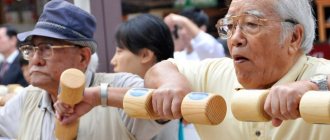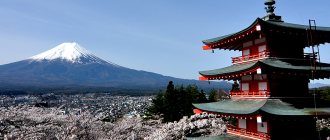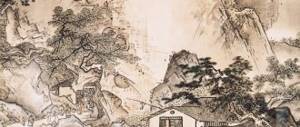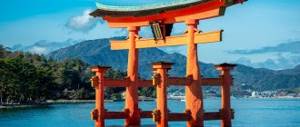Japan is the Land of the Rising Sun, which has long attracted the attention of Europeans. It's all about its originality, mystery and uniqueness. The Japanese call their state after the sun goddess Amaterasu - Nihon, that is, the beginning of the Sun. Europe first learned about the existence of a mysterious Asian country from Marco Polo in the 13th century. From that time on, many people wanted to explore, comprehend the traditions and customs of Japan, learn more about its culture and holidays.
National traditions of Japan
Since ancient times, the country has preserved a huge number of rituals and customs that are observed by the people today. This applies to almost all areas of life. It’s difficult to briefly talk about Japanese traditions, since there are so many of them. Remain unchanged since the Middle Ages :
- tea ceremony;
- family rituals;
- features of hospitality;
- sexual traditions and others.
The Japanese treat the surrounding nature with care and great love, admiring its naturalness, weather phenomena, flowers and the sea.
↑ Sculpture
The first figurines of warriors, animals, servants, and priests found in Japanese royal burial mounds date back to the 3rd-5th centuries AD. Since the 8th century, the number of statues has increased, which often decorated palace temples. Clay, bronze, wood, and varnish were used to make them. Due to the development of the country, many more statues of deities are being created.
The sculptural portrait also appears around this period. Since the 9th century, the images of deities have also changed, and are now depicted as having many faces and many arms. This change is associated with the development of religion, or rather its branches in the form of small sects. The sculpture of this time is characterized by a special way of developing them. Wood and varnish were used.
The desired shape was cut out of wood, which was covered with a layer of varnish. When the latter hardened, the wood was removed, and only a thin varnish shell remained. It was painted and easily transported to any place.
Japanese Family Traditions
Residents of the country get married, get married, have celebrations, and have fun in a special way, since their whole life is created from amazing customs. In such families, traditional foundations dominate, there are sacraments for raising children, and the concept of a little emperor is present.
Patriarchal foundations
In Japan, with the culture and traditions of the family, the custom of marrying children through the bride's ceremony has been preserved. Nowadays there are special marriage agencies. They are choosing a life partner. Male and female roles are strictly distributed. A girl submits to a man: a daughter to her father, a wife to her husband, a widow to her son.
Previously, according to Japanese family traditions, grandparents with their children, grandchildren, and great-grandchildren lived in the same house. The head of the family passed on his title by inheritance to his son or brother. Today, older and younger Asians rarely live together. However, respect and love for each other are always present and remain unchanged.
Family idyll
Traditionally, people prepare for a wedding in Japan 6 months in advance. The newlyweds dress up in special kimonos. A wig is considered a mandatory attribute of a bride. A modern family is created out of love, then 2-3 children are born. The head is called shujin, and his wife is called kanai.
After giving birth, the mother devotes herself to raising the child and takes care of the housework. Dad works, supports children and wife. Weekends are the best days for household members. They can sit down at the same table, have lunch, and then go for a walk. Mom serves food to her husband, then to her eldest son. The youngest child is beyond competition.
They say about kids: until the age of 5, he is a king, and then he turns into a servant. According to the national traditions of Japan, a child is a great happiness. If it is a boy, then double happiness. The child is idolized and his wishes are fulfilled. You cannot refuse a child or scold him. He must feel like a little emperor.
After 5 years, the child attends school and there is strict discipline here. In the early years, children are taught rules of behavior, not science. Each family has its own day of the year, where smiles, compliments, gifts are exchanged, and tea ceremonies are held.
The whole family gathers for the New Year. This is done in the home of the older parents, even if they live far away. Household members together decorate the house with pine or bamboo at the entrance. New Year begins after the bell strikes 108 times. This is not a random number. In Buddhist philosophy, the ringing of bells cleanses from 108 sins that overcome a person.
Traditional days for girls, boys and their parents
In Japan, holidays and traditions of giving gifts to girls and boys are observed. Girls celebrate their day on March 5th. All houses display collections of ceramic dolls in luxurious outfits. Dolls become family heirlooms. When their daughter is born, they buy her a doll as a gift. Therefore, before marriage, the bride collects a large collection of ceramic figurines. It is believed that they instill in a girl a sense of beauty, teach polite manners, develop taste, and reveal the best character traits.
Boys' Day is celebrated on May 5th. Toy warriors and equipment are placed around the house, and photos of carps are hung near the house, which symbolize vitality. Up to the age of 15, boys are congratulated and wished for courage and valor.
In the first 10 days of May, all mothers are congratulated and given gifts and flowers. Father's Day is celebrated on the third Sunday of June. Popes are presented with red roses, and white roses are placed on the graves of the deceased.
Customs related to food
In Japan, when entering home, it is customary to take off your street shoes and put on slippers. Before guests arrive, they are kindly placed near the front door. However, before sitting down at the table, slippers must also be removed. Every breakfast, lunch or dinner in Japan begins with the words “itadakimas”. This is something like the phrase “bon appetit” that we are used to. This is how the Japanese thank everyone who was in one way or another involved in the dishes on the table - who prepared the food, who collected the ingredients for it, to the higher powers that helped them. A hot towel is also provided before the start so that everyone present can dry their hands. After all, according to Japanese customs, it is not considered shameful to take food with your hands; it is important that they are clean.
Tables in Japan are very low. The dinner participants sit behind them on the tatami, in the seiza position - on their heels with a straight back. At official celebrations, this position is considered mandatory, but at home you can sit at the table in Turkish style.
Japanese culture implies that a person should not only eat, but also enjoy the taste of food. Therefore, all dishes are served in separate dishes and cannot be mixed.
There are always a lot of dishes on the table; in addition to traditional rice and several soups, more than 5 types of snacks are served. But the portions are very small, this is done so that those present can try all the dishes without overeating.
During a meal, many dishes are placed on the table
Traditionally, food is placed on the table at the same time, it is laid out in special dishes that maintain the optimal temperature. This way no one worries that the food will get cold. If suddenly, for some reason, the dishes are not placed on the table all at once, then there is a strict order in which they appear:
- rice;
- sashimi (raw fish);
- soup;
- seafood and meat prepared in any way;
- spicy food.
While eating, it is not considered shameful to slurp loudly - on the contrary, this will show your hosts how much you enjoy the food.
But according to Japanese traditions, you don’t have to finish the dish. This serves as a signal to the owner to bring another one. If you have eaten your entire portion, it means that you are full. But rice must be eaten to the last grain, otherwise it is considered disrespectful.
The Japanese eat almost all dishes with chopsticks, even soup - the broth is carefully drunk directly from the cup, and the rest is eaten with chopsticks.
There are a number of rules that must be followed when using chopsticks. They are prohibited:
- move dishes;
- point to someone present;
- pass food;
- ask for another portion.
You also cannot stick chopsticks vertically into food - this is done only at funerals when remembering the dead.
Do not place chopsticks across the cup, hold them in your fist, or hold them in your hand together with other objects.
After finishing the meal, those gathered say the phrase gotiso: -sama-desita, which means “this was a wonderful meal.”
Japanese drinking traditions
Traditionally, Japanese people drink three types of alcoholic beverages:
- sake;
- beer;
- whiskey.
Sake is a traditional alcoholic drink in Japan.
While drinking alcohol, it is not customary to clink glasses or make toasts. They drink in silence, only before raising their glasses for the first time do they say “kampai” in unison.
The Japanese are not resistant to alcohol, so they get drunk quickly and from small amounts of alcohol. But they don’t see anything wrong with it, so a drunk person is not condemned by society.
THIS IS INTERESTING. Many restaurants in Japan allow you to leave an unfinished bottle of alcohol until your next visit to the restaurant. The bottle will be signed and carefully stored behind the bar.
Tea ceremony in Japan
There are several types of tea ceremonies:
- night - takes place after midnight and lasts until approximately 4 am;
- at dawn - from 4 to 6 am;
- morning - takes place from 6 am, usually in hot weather, when it is still cool in the morning;
- afternoon - starts at about one o'clock in the afternoon;
- evening - from 6 pm;
- special - held on holidays or during important events.
Before the ceremony begins, all guests are gathered in one room and served with hot water. They are then led through a beautiful garden to a tea house, where the host of the ceremony is already waiting for them.
There is a well next to the house; everyone present washes their faces, hands, and rinses their mouths.
After that, they take off their shoes and go into the tea house.
Tea ceremony venue
Here the host bows to his guests and sits opposite them.
While the water is heating up, light snacks are served.
After a snack, all guests leave the house to take a walk and stretch their legs. And the owner at this time makes chabana - a composition of flowers.
Finally the guests return, and the owner begins to prepare tea. No one talks during this process.
The tea is given to the oldest participant in the ceremony to taste first, then to the youngest. Tea is drunk from a common cup, which symbolizes the unity of all participants.
When the cup is empty, the drink is poured into the cups of each guest, and the conversation begins.
Then the owner, apologizing, leaves the guests. This means that the ceremony has come to an end.
The timing must be calculated correctly so that by the end of the ceremony the flowers in the chabana have time to open.
After the guests leave, the owner returns to the tea house to clean up and reminisce about the tea ceremony.
We invite you to watch a short video about the tea ceremony.
Sexual traditions of Japan
We can talk endlessly about Japanese sexual traditions. According to Shintoism (the dominant religion), sexual intercourse between a man and a woman was not considered a sin, on the contrary, it was welcomed.
Since ancient times, a girl's chastity was not a prerequisite for marriage. Premarital sexual relations were especially widespread among the common population. Japanese aristocrats showed an unusual attitude towards the issue of chastity. They did not condemn their wife if she had sexual experience with a representative of a higher rank.
Only among the military was a girl’s virginity considered a prerequisite for a successful marriage. Otherwise, the shame fell on the whole family, especially the mother, who could not raise her daughter properly, was condemned.
Traditions in Japan with octopus
In the Land of the Rising Sun, the octopus is a creature that symbolizes orgasm in Japanese culture. Images of such animals can be seen in paintings. Here, artists often show women copulating with an octopus. In modern Japan, paintings with sexual elements depicting the inhabitants of the seabed are very popular.
According to tradition, various dishes are prepared from octopus in Japan. In expensive restaurants in spring and summer, visitors are sure to serve a dish from this animal. In the east of the country, the sea reptile is even included in the list of New Year's treats. Octopuses are marinated in vinegar or colored with food coloring.
The most famous option is the takoyaki dish. Pieces of octopus are placed in dough balls. They are eaten dipped in sauce, seaweed, mayonnaise, and ginger are added. Octopus is valued not only for its pleasant taste, but also for its low calorie content. The animal is rich in protein, taurine and helps withstand the heat.
Just a little bit of history
Culture is a reflection of historical events. Japan has been inhabited since ancient times, but it is separated on one side by the ocean and on the other by the impassable Himalayas. The history of Asia generally followed a separate path from Europe.
About Japan - also on an island, so the isolation was stronger. Plus, one of the emperors closed the country with an “iron curtain” for a very long time, artificially prohibiting communication with neighbors.
Until the 15th century, it communicated only with China, they took turns capturing each other, and during periods of peace they traded and borrowed traditions. Then we met the Europeans and... fenced ourselves off from them.
Until the 19th century, Japan lived without European culture; it was, in fact, a large village with internal political turmoil. In 1868, the Meiji Restoration began, transforming the country into a modern technological power in just 20 years. Since then, Japan has been part of the civilized world and the global economy.
Tea traditions of Japan
For the Japanese, tea drinking is a specially prepared and consistent meeting between the host (tea guru) and his guests for the purpose of a pleasant pastime. The ceremony is held in the depths of the garden - the tea house, and includes several actions that must be observed by the owner of the house.
According to Japanese tea traditions, special items are used to form a harmonious set. This includes: a box for storing tea, a kettle for water, a large bowl for sharing drinks and cups for guests, including a spoon for pouring tea, a stirrer, which only the owner uses.
The set should be simple in appearance. Teaware is passed down from generation to generation. For the tea ceremony, a certain type of locally produced powdered tea is selected - matcha. It is obtained by grinding ordinary large-leaf tea. The tea leaves are not thrown away, but eaten.
According to tradition, guests come to a tea ceremony hungry, and a snack is served symbolically. The function of food is to please the eyes, but not to satiate the stomach. Matcha is a Japanese drink with a delicate green tone.
The tea drinking ritual takes place in stages: before the meal, guests look at paintings, interior items, and take their place at the table, which corresponds to the position of each of those present. The meal lasts 2-3 hours. After preparing the thick matcha drink in the bowl, it is passed around.
Tea is drunk in small sips. Then the guests try light tea. It is more liquid and is served to each guest in a separate bowl. All utensils and interior items must correspond to the season. Kimonos worn by guests should also be appropriate for the time of year.
Traditions of samurai and geisha
This was a separate class of military and feudal lords, whose ranks were regularly replenished by people from noble families. Basically, these were minor nobles who were not destined by birthright to receive a family title and wealth. They were forced to serve the shogun or emperor in order to achieve a certain position in society, titles, to be able to occupy a government position and become owners of land.
Samurai are an exclusively Japanese phenomenon; such people did not exist anywhere else in the world. Some historians compare samurai with medieval knights, but such theories are not supported by anything. Samurai began to emerge as a separate class in the 7th century. AD, and already by the 13th century. samurai became an important class in the structure of Japanese society. They served the nobility and aristocrats, gradually becoming important political figures in the country.
The ideology of samurai is based on Zen Buddhism, and is based on Bushido - a special teaching and a special code of honor. Samurai had no right to violate it; its rules had to be followed unquestioningly. The warriors were well trained not only in military affairs and skill, but also received an excellent higher education. In particular, samurai studied artistic arts, painting, literature, and poetry. Representatives of the class wore hair and swords - one large, the other smaller. The classic image of the samurai was formed only in the 18th century. It was called bushi. The class actually ceased to exist in the 19th century, but the ideology and code of Bushido are still preserved in the Japanese.
Geisha were as integral a part of Japanese society as the samurai. A geisha was a woman who wore special (traditional) makeup and hairstyle, and had to be able to sing, organize tea ceremonies, entertain guests, and carry on conversations. All activities and functions of geishas fully corresponded to the translation of the word from Japanese, which means “man of art”
The main activities of geishas included:
- Organization and holding of banquets in the Japanese style, in compliance with all traditions and orders.
- Act as a hostess and presenter at such events, entertaining representatives of both sexes.
- Light flirting, but it was not allowed to go beyond it.
- Supporting conversation on any topic so that guests don’t get bored.
- Dances that were supposed to carry a certain meaning and character. Each dance had its own characteristics, but there were also common features. Firstly, facial expressions were not used during the dance. Secondly, poses and movements must be organic, complementary, connected in order to convey a certain story through dance.
The profession of “geisha” appeared in the 16th century. in cities such as Tokyo, Osaka and Kyoto. At first, men who performed in the Kabuki theater worked as geishas. Then the profession became exclusively female. Even today, there is a close connection between Kabuki actors and geishas. For example, the former (actors) go to events organized by geishas, and the latter go to performances by musicians and Kabuki actors. In the 17th-18th centuries. There were several types of geisha profession:
- Shiro-geisha was only concerned with making sure that the guests’ leisure time was fun and carefree.
- Korobi-geisha - performed basic duties and sold her intimate services for a fee.
Geisha were included in the list of professions only in 1779, when a special institution appeared - the Kamban office. Here they established the rules of behavior for geishas, their rights and responsibilities. Young ladies who were engaged in prostitution could not sit next to the geishas who were hosting banquets. They were strictly forbidden to sit next to guests and wear bright-colored kimonos.
The training of girls whose parents sent them to geisha school began very early. Representatives of the poorest families, who were unable to support girls, provide education and teach them good manners, were sent here. Therefore, parents were forced to sell their girls. This is how they ensured a (relatively) comfortable existence for themselves and their daughter. In modern Japan, geisha schools have survived, but not everyone can get here after passing a tough competitive selection. First, you need to meet certain requirements. Secondly, the girl must be 15 years old at the time of submitting documents. Third, she is required to graduate from high school. Geishas will not be hired without a high school diploma.
Having entered such a school, girls become servants of revered geishas for a while. The students clean, cook, and learn good manners. After a while, their status “increases”, and the girls become assistants to geishas. While continuing to perform their daily duties, they become participants in classes taught by geishas. Here they are taught music, painting, dancing, drawing, history and politics. After all, every geisha is obliged to understand politics, including world politics, to understand the trends in the development of international relations and economics, and to know current news. Such knowledge is necessary due to the fact that civil servants, officials, and politicians become clients of geishas.
Geisha's training never ends; it lasts a lifetime. Six months after the start of the training process, girls must pass exams and undergo an initiation ceremony in order to receive the title of "maiko". Those who reach this stage receive a personal mentor who helps them find clients, study, and conduct events. Maiko try to get to more influential and authoritative mentors, since their advancement up the “career” ladder depends on this.
All geisha are required to take care of their beauty and physical health. Girls and women spend a lot of time undergoing cosmetic procedures and special massages. The complete list of geisha secrets is unknown, so representatives of the profession in Japan have enormous influence in society.
Nowadays, rich and influential people book geishas as escorts for various events. Many of them pay 2-3 thousand dollars for one evening so that someone can entertain them with conversations, dances, songs, games, and music. Clients are instructed before paying so as not to violate the woman’s personal space. For example, it is forbidden to touch her hands and hair.
Traditions of hospitality in Japan
The hosts know how to meet, serve and escort a person at the highest level. In many cities and villages of the country, the traditions of hospitality in Japan have been preserved to this day.
Before guests arrive, water is sprinkled at the doorstep of the house. The ground must not be too wet or dry when people arrive. It is not allowed to light incense long before guests arrive. The aroma will fade, and thick smoke in the house will become disrespectful to the person. Everything requires timeliness.
Incense is lit in the hallway. Flowers are chosen according to the season, the guest's preferences and the topic of the conversation. When such conditions are created, it becomes clear that the owner of the house was waiting for his guest with great impatience and joy.
Upon crossing the threshold of the house, a person is immediately treated to tea and, according to custom, sweets are served. Most often these are Wagashi, personifying poetic images and nature themes. Initially, the guest receives aesthetic pleasure from the sweet composition, then asks the name of Wagashi, then proceeds to a conversation with the owner.
Wagashi names are associated with Japanese literature. They serve as a new topic for conversation. Therefore, the conversation can last a long time, depending on the wishes of the guest. After that he tries sweets. Wagashi are not simple candies to be eaten. This sweetness is created for adults who know how to sense hidden beauty. The guest is escorted until he is out of sight.
Formation of traditional and cultural values
Traditional Japanese values are a tribute to the historical development of the country. The foundations of cultural heritage should be sought in the period when ancestors who migrated from the mainland began to settle on the islands - the Jomon stage. The development of culture and the birth of a special Japanese identity were affected by long-term self-isolation from the other world - the so-called sakoku policy. It was only in the mid-19th century that real contacts between the Japanese and other nations began, when the Meiji stage began. Despite the long-term maintenance of its own identity, starting from the 60s of the last century, the influence of China, Europe and the USA began to be clearly visible.
The special Japanese mentality was undoubtedly affected by long-term isolation, geographical location and climate characteristics. Such powerful factors as frequent earthquakes, typhoons, hurricanes, and tsunamis could not but influence the formation of unique traditions and culture. The Japanese felt the need to revive inanimate nature, giving various phenomena living images. A distinctive feature of the Japanese has become the ability to sincerely admire moments of natural beauty. Traditional Japanese art grew out of these values.
Traditional Japanese values, which leave an imprint on all aspects of life, include asceticism, family rituals, decency, standards of decency, a sense of dignity, which to one degree or another was associated with religion, and therefore gave deep roots. These norms, sometimes taken to the point of absurdity, are generally supported to this day. For the Japanese, strict subordination, reminiscent to a certain extent of admiration, is quite normal. Society is characterized by the unification of people according to social principles, with the creation of special relationships within the group, and weak contacts between groups. The Japanese have a special attitude towards understanding debt and obligations (a special category is giri).
The catastrophic tsunami in Japan in 2011 particularly clearly revealed the features of society. Japanese traditions are largely determined by the influence of such destructive factors. And the new test proved that people have retained the baggage that gives rise to patriotism, hard work, and high dedication.
Unusual traditions of Japan
Among the unusual traditions of Japan, it is worth highlighting the most interesting. These include:
- New Year at dawn. The country's population does not celebrate the New Year the way Europeans or Americans do. On New Year's Eve, people go to bed, and in the morning they begin to greet the dawn with the whole family.
- They don't say the word "no". It is not customary for people to refuse a person and say the word no. They replace it with another polite phrase and try to move away from the topic so as not to offend the person.
- No jokes. Japanese people don't have jokes, but these people have an interesting sense of humor.
- Don't forget about the business card. In the Land of the Rising Sun, it is considered indecent to leave home without a business card. They carry it everywhere, even taking the business card with them to the pool and placing it in a waterproof handbag.
- A moment of politeness. It is not customary for the Japanese to shake hands when meeting each other. Instead, people bow.
- Transport oddities. The subway employs specialists called pushers. They push people and pack them into carriages.
- Oddities of schoolchildren. Girls are not allowed to interact with boys until a certain age. Students should not walk alone. This is considered an immoral act.
- No address. Many streets in cities do not have names. Houses are indicated descriptively or by number within the block.
- Fear of twins. In ancient times, when twins were born, one of them was called the son of a demon. Therefore, just in case, they got rid of both children, as well as their mother.
- Family budget. The woman manages all family finances. The husband has no right to even ask about money or purchases.
- Anti-etiquette rules. While eating, you need to smack and slurp, but you cannot move dishes, eat bitten pieces of cake, pierce food with chopsticks, and also use a spoon or pour your own lunch.
An equally interesting tradition in Japan is the adoption of adult boys. This is due to the fact that the mother and father wish to pass on their surname. Therefore, adoption of the daughter's husband is appropriate.
Japanese art
Almost all types of art practiced in Japan carry one main idea - calm and relaxation. It is precisely the harmony of a person with himself that contains art, regardless of the method of presenting information. Many types of art known throughout the world began their development in Japan. Among them we can highlight origami - the ability to fold various shapes from paper.
Another popular part of Japanese art is ikebana. This is the skill of forming bouquets of flowers using special technology. From here came an equally popular activity called bonsai. This is the creation of various compositions from dwarf trees. In Omiya, not far from Tokyo, there is a whole Bonsai park. Each dwarf tree presented here is unique and beautiful in its own way.
Japanese painting deserves special significance, since each painting carries a hidden meaning. As a rule, bright colors, contrasting transitions and clear lines are used as design. Japan also has the art of calligraphy. This is the skill of aesthetically beautiful writing of hieroglyphs. Applied art is also widespread in Japan. There is an entire museum in Tokyo dedicated to this craft. Here you can see products made of paper, glass or metal. And this is not a complete list of materials used for this purpose.
The Japanese style of interior design also deserves special attention. It includes functionality and simplicity, along with originality of execution. In addition, interior design carries religious philosophy, just like any other form of Japanese art.
Traditions of pregnant women in Japan
The Japanese treat pregnant women coldly and even shame them. Often, women in interesting positions are considered a burden because they work slowly. If we look at the tradition of pregnant women in Japan, these women are not given a seat in transport. One of the reasons for the cold attitude towards expectant mothers is considered to be their small number throughout the country; they know nothing about them and show indifference.
It is difficult for the Japanese to speak first and make contact with a stranger. The same is true for pregnant women. They cannot ask to give up their seat on the transport or to let them go ahead. Women do not interact with strangers, considering it a strange act.
Language and culture
It is not possible to learn Japanese perfectly in a year or two. This is not English or German. The language of the inhabitants of the Japanese islands was formed under the influence of philosophy, religious movements, and the political system. There are three different scripts in modern writing, although some linguists say there are four if the use of Roman script is taken into account. Because of this heterogeneity in the use of fonts, Japanese is considered one of the most difficult languages in the world. At the same time, this does not interfere with catching individual sounds and learning words by ear. The language is not tonal, words are pronounced clearly. It is not difficult for tourists from European countries to learn a few words in order to navigate in a particular city. This way you can find out where to change money, where the public transport stop is, or how to get to the airport/train station.
Public life
Traditionally, Japanese social life is not that simple. The working day of each resident begins at 9 am and lasts 12 hours. These are real workaholics who take their responsibilities seriously. If a goal is set for career advancement, then a company employee must stay late at work and leave after the boss.
The Japanese do not like active and ambitious workers who show leadership qualities. There are companies in which employees go to lunch after cleaning the workplace. Vacations are taken in rare cases and for a short period. Workers prefer to go on vacation as a group.
During vacation, the Japanese always go somewhere. They are constantly moving, they don’t even stay in a hotel for more than 1 night, they love to visit all the sights, take pictures, and listen to the guide with great attention.
Young people have a defiant appearance. Teenagers walk around the city in strange clothes and with brightly colored hair. However, boys and girls behave this way until they start working. Then another stage begins - a monotonous working life in gray suits and white shirts.
Eating
The Japanese never stick to diets, and a beautiful physique is the key to maintaining culinary traditions and proper nutrition. The dishes served are appropriate to the situation. The cooks take into account the time of the meal, weather conditions, and the age of the person who will be dining. Residents of northern regions eat more than representatives of southern regions. Older people eat smaller portions compared to younger people.
Every day the population uses rice. It contains many useful substances. Hot and cold dishes and desserts are prepared from rice and eaten with chopsticks. The Japanese use brown unpolished rice because it contains microelements and fiber.
The Japanese population even uses chopsticks when eating soup. They drink the broth and then proceed to the thick mass of lunch. An important part of the menu is seafood, green tea, and soy. Tea drinking occurs after every meal. The main condition when eating food is healthy food, prepared from fresh ingredients.
Music
Traditional music of Japan was formed under the influence of Korea and China. There are two directions in folklore - the religion of Buddhism and Zionism. The themes of Japanese legends included supernatural spirits, animals, and characters with unearthly abilities. Folk music contains such important parts as greed, gratitude, envy, wit or humor, and sadness.
Japanese folk songs praise sakura - the cherry tree, and the crane - a symbol of happiness and longevity. The classification of Japanese music genres includes religious, theatrical, and folk motifs. Gagaku court music and Buddhist seme chants are considered ancient genres. There is a secular genre - court orchestral music. Gagaku is an ensemble of instrumental, dance and vocal music.
The absence of musical notation is a feature of Japanese music. Before the Meiji era, a system of notation using lines, signs, and figures was used. They indicated the desired string, tempo, and character of the performance.
Funeral
Funerals are considered one of the unusual rituals in Japan. The lips of the deceased are moistened with water, and a special knife is placed on the chest - a symbol that drives away evil spirits. A table with flowers and a scented candle is placed near the deceased’s bed. The body is washed and funeral makeup is applied. Women are dressed in kimonos, and men are buried in a business suit. The deceased's belongings and 6 coins are placed in the coffin with him. The money is the payment for crossing the Sanzu River of the Dead.
It is customary to provide financial assistance to the family of the deceased. Money is brought in envelopes decorated with mourning flowers. The amount depends on how close the deceased was to the guest. The deceased is said goodbye the day after the funeral service. This takes place in a Buddhist temple. As a sign of grief, when saying goodbye to a person, guests place flowers on his shoulders and head.
The priest gives the deceased person a new name, which should protect the deceased from the call of the living. After the ceremony, the coffin with the body is taken to the crematorium in a hearse. In Japan, cremation is considered the most common method of burial. The relatives of the deceased silently watch as the body of the deceased is placed in the crematorium oven.
The ashes of the deceased are transferred to the urn using large steel sticks. The ashes of the lower part of the body are laid first, and the upper part last. The location of the remains should not be disturbed even in the urn. Funerals will take place in a regular family burial site in a cemetery or in a gravesite on a corporate plot.
Sculptural direction
Sculpture in Ancient Japan is mostly associated with religious and ritual traditions. Back in the 3rd-5th centuries, people learned to make small figurines called dogu.
Dogu depicted people and animals, and given that they were found in burial mounds, we can conclude that they were placed in the grave along with the deceased - these were their servants who could be useful in the next world. Dogu were clay, bronze, wooden, and lacquer figures. Later, larger statues of deities were also created at burial mounds and Shinto shrines.
Dogu figurine
The arrival of Buddhism in the country naturally affected local sculpture. In the 6th-7th centuries, numerous monuments to Buddha began to appear. Following the Chinese and Korean masters, local sculptors began their journey.
By the 9th century, the sculptural direction began to develop even more, but the appearance of the Buddhas and Bodhisattvas changed - they began to have several, up to a thousand, faces and hands. Most often they were made from strong wood, varnish, bronze, and clay.
Many beautiful monuments have survived to this day. For example, in the Haryu-ji temple a majestic figure of Buddha sits on a lotus flower, and in Todai-ji there is a whole ensemble of deities led by a 16-meter tall Buddha, created by sculptors Kaikei and Unkei.
Religion
Religion is represented by Buddhism and Shintoism. Many believers in the country consider themselves to belong to both directions at the same time. At the end of the 19th century, Shintoism was the only and compulsory religion. At the end of World War II, after the adoption of a new constitution, Shintoism lost its significance. Japanese religion is aimed at syncretism - a mixture of different religious practices. Parents and children celebrate Shinto rituals, school students pray before exams. According to Japanese wedding traditions, the bride and groom are married in a Christian church.
Interesting Facts
- Japan has a high population density. This is a small state located on more than 6,000 islands. 127 million people live here.
- Increased workaholism. In terms of living standards, Japan is one of the top ten countries in the world. The success of the residents lies in their workaholism. They work for the same company all their lives. Work takes up 99% of the average Japanese person's time.
- Country of traditions. Japan has maintained its monarchy to this day. The symbol of the unity of the people and fidelity to tradition is the emperor.
- Amazing metro. It is not allowed to talk on the phone here. There are women's carriages in the country so that men do not pester.
- Suicide forest. There is a forest near Fuji. People come here to say goodbye to their own lives. Over the course of a year, more than 100 bodies are found in the forest. The cause of suicide is burnout at work and internal loneliness.
- Unusual clothes. Women and men wear kimonos on special occasions. Geisha and maiko dress up in this type of attire. Men wear kimonos to weddings when they welcome guests for tea.
Particularly interesting is the use of water procedures. For this purpose, an ofuro bath is used. The bathtub has a square shape and great depth so that the water covers the shoulders. Therefore, the bather has to sit with his knees bent, resting on his chest. Ofuro today is used mainly for physical and spiritual relaxation.
Japan will always attract the attention of foreigners because it is very different with its unusual and interesting traditions.
Popular message topics
- Pacific Ocean
The Pacific Ocean is the deepest. The average depth of this ocean is about 4 kilometers, and the deepest point is the Mariana Trench, its depth is about 11 kilometers. Also the Pacific Ocean is the largest. It occupies half of the entire World Ocean and a third of the total - Byron's work
George Gordon Byron was born on January 22, 1788 in London on Hall Street into a very poor family and bore the title of Lord at birth. Before his birth, the Byrons had a large fortune, but his father, - Lightning (natural phenomenon)
Often during a thunderstorm we can observe a bright flash of light in the sky, which is then accompanied by a shock wave of sound - thunder. This electrical discharge in the atmosphere is called lightning. Lightning doesn't only happen on Earth.











